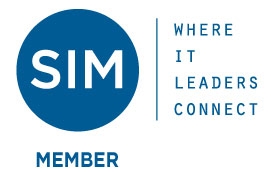Passing along a Nov 19, 2014 Inc.com article authored by Lou Adler.
[Bob Norton Edit: Assuming you have ranked the priority of hiring criteria relevant to the business deliverables requiring the hire, then evaluating each candidate’s qualification ‘fit’]
The Size of the Opportunity Gap Predicts Engagement and Performance
The 4 Deadly Hiring Sins and How You Can Overcome Them
The cause of most hiring mistakes can be attributed to one of the “Four Deadly Hiring Sins.” If not addressed, the result is hiring people you shouldn’t, but worse, not hiring those you should.
Over the past 30 years, I must have debriefed more than 2,000 hiring managers as to why they decided to hire or not hire someone. Since I have been able to follow-up with many of the people they did and didn’t hire, I can distill most of their errors in judgment into one of these four deadly hiring sins:
“The Four Deadly Hiring Sins”
1.The Sin of Seduction. Getting seduced by first impressions results in hiring those candidates who are more talkers than performers, and not hiring top people who were temporarily nervous or are a bit quiet.
2.The Sin of Narrow-mindedness. This is caused by overvaluing gut feelings or putting too much trust in your intuition. It results in hiring people who are good at some things–like communicating and planning–but not everything, like delivering high-quality results on time.
3.The Sin of Being Too Smart. Smart technical managers think everyone needs to be technically brilliant. This results in hiring people who are brilliant, but often aren’t able to work with non-techies, or who don’t fit with the culture, or who are unmotivated to do less technically satisfying work. It also results in not hiring people who actually have the full technical ability to do the job and are willing to do it.
4.The Sin of Arrogance. Too many managers assume candidates should be excited about the job before they know what the job is. This is a great way to hire people who are better at getting the job rather than those who are great at doing the job. It’s also a great way to not hire passive candidates who might be excited about the job after they learn what it is.
These four deadly sins can be quashed by simply having the hiring manager conduct a career-oriented, exploratory phone screen before inviting the person onsite. This is especially important with passive candidates. If someone is not looking, the focus of the first meeting must be an open discussion about the career potential of the position, rather than diving right into the interview.
Conduct an exploratory interview to fight the four deadly hiring sins.
1.Opening. Clearly state that this is an exploratory discussion to determine whether the job offers the candidate a career move. This is a critical statement, since it shifts the interview from investigatory to collaborative.
2.Quick review of the candidate’s background and career focus. Ask the candidate what she’s looking for career-wise, how long she’s been looking, and why she might leave her current spot. Then spend five to 10 minutes reviewing the candidate’s work history to gain a sense of general fit and ability.
3.Quick review of the job and career opportunity. Provide the candidate with a high-level view of the job, why it’s important, and the impact it could have on the company. If obvious, highlight the possible areas of growth for the candidate based on the person’s resume and what was just discussed.
4.Conduct a short work history review. Assuming there’s mutual interest, start reviewing the candidate’s background in some detail. Just get highlights at first, looking for evidence of the achiever pattern.
5.If there’s a reasonable fit, describe the next steps, being semi-positive, but introduce some areas of stretch. Shift the conversation a bit, describing what you like about the candidate and areas where the job could offer some stretch. Ask if the candidate finds this appealing in comparison to other opportunities she is considering. If so, suggest you’d like to dig in a little more to see if the person has the potential to handle a bigger job at this time and if there is a good cultural fit. This is a great way to get permission from the prospect that it’s now appropriate to dig into her background.
6.More detailed job fit assessment. Describe a major job challenge and ask the candidate to describe a comparable accomplishment. If there’s a match, describe some of the growth opportunities in the job–often these are the gaps in the person’s background that your opening fills–and ask if she’s interested in proceeding.
7.Allow for candidate questions. Ask the candidate what criteria she’s going to use to compare positions in general and what things she would want to know about your open position in particular. Answer a few of the big ones, but don’t oversell. Find out the person’s timing regarding a move.
8.Recruiting and next steps. Instead of rushing to a close, tell the candidate that you’re impressed with her background, but that you have some other strong candidates to consider. Ask her if she believes the job as described represents a career move, especially in comparison to others she’s considering, and if she would like to come back for a more detailed interview.
I suggest you conduct this type of exploratory interview over the phone first with every candidate, whether they’re active or passive. Treating the first discussion as a conversation changes the very nature of the interviewing process. It’s how you minimize the impact of the four deadly hiring sins. This alone will prevent good candidates from opting out before they’ve fully considered what you have to offer. Even better, those who do decide to proceed will do so on the understanding that your job is a career move, not a lateral transfer.
Lou Adler is the CEO of The Adler Group, a consulting firm helping companies implement performance-based hiring. His latest book, The Essential Guide for Hiring & Getting Hired (Workbench, 2013), covers the performance-based process described in this article in more depth. Lou is one of LinkedIn’s top 20 Influencers, has appeared on Fox News and is frequently quoted in Business Insider, The Wall Street Journal and recruiting industry trade publications around the world.














Comments are closed.